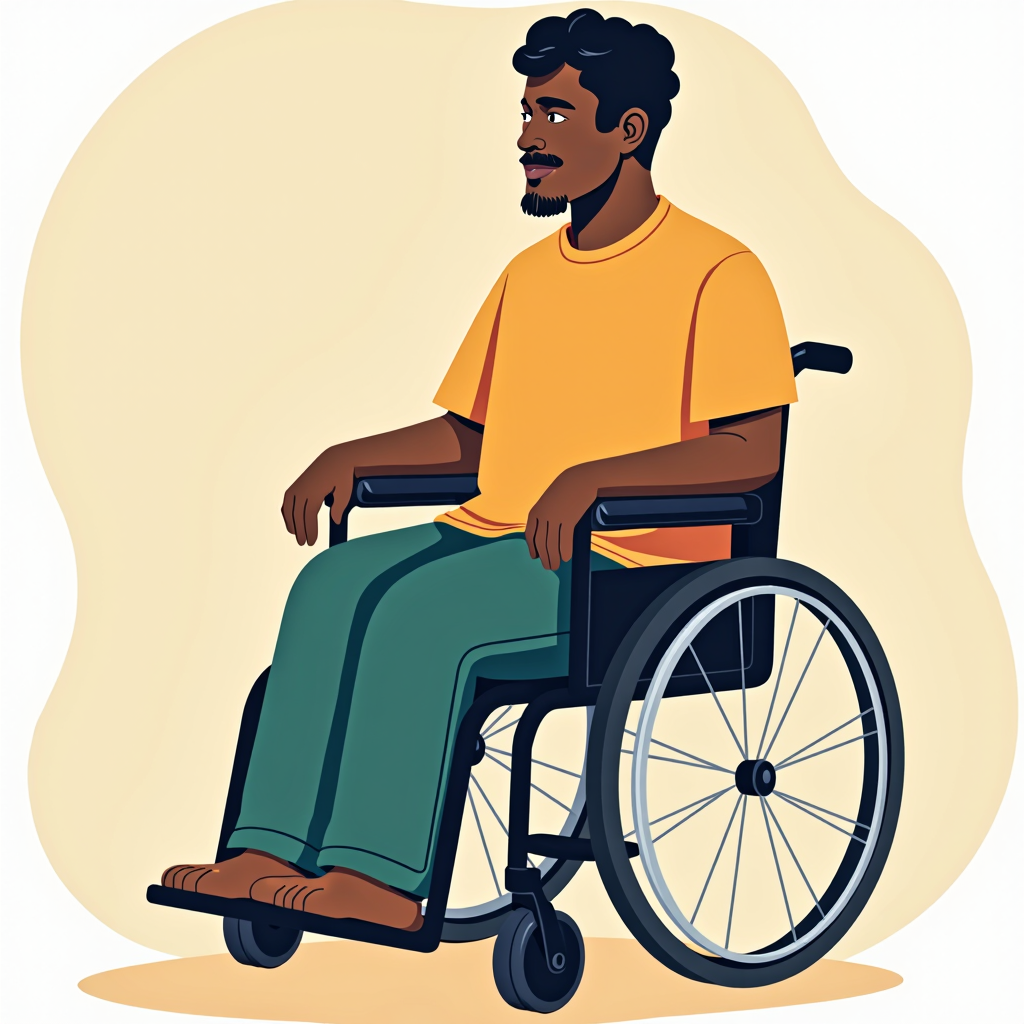Who Gets MS? - Part 3
Welcome to Part 3 of Who Gets MS? If you haven’t read the first two sections yet, you can start from the beginning by clicking here for Part 1 and here for Part 2.
Now, let’s dive a little deeper into who gets MS—and why certain groups seem to be more or less affected by this mysterious disease.
Race and Ethnicity: Does MS Discriminate?
Would you believe that there are certain groups of people who rarely, if ever, develop MS? It sounds surprising, but research has shown that some populations have significantly lower rates of the disease in spite of where they live.
For example, MS is extremely rare among:
- Inuit populations
- Romani people
- Yakuts in Siberia
- Bantu populations in Africa
Additionally, other Black groups in Africa also have very low rates of MS.
So, what does this mean for African Americans?
While MS is less common in Black populations overall, African Americans develop multiple sclerosis at higher rates than Black populations in other countries. This could be due to interracial ancestry, environmental factors, or differences in healthcare access. Where you are born also plays a part in your risk for MS.
Interestingly, Asian populations also have low MS rates. Even when Japanese individuals migrate to regions with high MS prevalence, they still develop the disease at much lower rates than the local population. The same trend is seen in Native Americans and Indian groups from countries like India, Pakistan, Sri Lanka, and Malta.
So, what’s going on here?
Scientists believe that genetics, environment, and lifestyle all play a role in determining MS risk. But as with everything related to MS, there’s still a lot we don’t know.
Men vs. Women: Why Are Women More Likely to Get MS?
One of the biggest patterns in MS research is the gender difference.
Women are far more likely to develop MS than men. In fact, the ratio is:
- Almost 2 to 1 in the United States (1.8 to 1).
- Nearly 3 to 1 in Western Australia (2.8 to 1).
- And an average of 1.4 to 1 across global studies.
So, why the big difference?
One theory is that women are more proactive about their health, meaning they seek medical attention sooner and for that reason they are diagnosed more frequently. But that’s not the whole story.
Researchers believe that hormones play a major role in your risk for developing MS. Since multiple sclerosis is an autoimmune disease, it’s possible that estrogen and progesterone influence the immune system in ways that make women more susceptible.
Interestingly, while men are less likely to develop MS, they often experience a more aggressive form of the disease once they're diagnosed. Their symptoms tend to progress faster, and they may face greater disability earlier in life.
Do Healthcare and Diagnosis Rates Affect MS Statistics?
When looking at race and gender differences, it’s important to consider healthcare access and diagnostic rates in the equation.
For example, do African Americans go to the doctor as often as white Americans when they experience early MS symptoms? If Black individuals are less likely to seek medical care, their MS may go undiagnosed for longer. This, unfortunately, can lead to delayed treatment. And as a result, they also tend to experience worse outcomes.
Similarly, in countries where healthcare access is limited, MS may be underdiagnosed simply because people don’t have access to specialists like neurologists or testing equipment like MRIs.
This means that some of the statistics we now rely on may not paint the full picture of who gets MS.
Environmental Factors: The Missing Piece?
While genetics play a role in your risk of developing MS, environmental factors may be just as important.
For example, as you may have already read, multiple sclerosis is more common in regions farther from the equator. Scientists believe this is linked to vitamin D levels, since sunlight exposure helps the body produce vitamin D, which supports immune health.
This could explain why:
- Northern Europe, Canada, and the U.S. have higher MS rates.
- Asia, sub-Saharan Africa, and South America have lower MS rates.
Additionally, migration studies have shown that people who move to a high-MS region before age 15 have the same MS risk as the local population. But if they move after age 15, their risk remains the same as the country they were born in.
This suggests that early exposure to environmental factors—like sunlight, diet, and infections—may influence MS risk later in life.
So, Who Gets MS? The Answer Isn’t Simple
At the end of the day, MS doesn’t follow a strict rulebook.
While certain patterns exist—like higher rates in women, lower rates in certain ethnic groups, and geographic trends—multiple sclerosis is still unpredictable.
The most important takeaway? Awareness of the disease and early diagnosis for those at risk of developing it do matter. The more we understand MS, the better we can treat it, manage it, and eventually cure it.
This article on the site Black Doctor says that research is showing that Black people have a higher risk of developing MS. Cir and I have seen this within both of our families. Cir and his cousin both have MS, and I have two brothers with multiple sclerosis.
Be an advocate and a support
We have always wondered if black peoples' distrust of the medical system keeps them from seeking help for symptoms much later than other races. It's certainly a possibility.
We remember Cir's parents making a statement years before he was diagnosed. They made an offhand remark to one another-"It sounds like MS"-as if they knew what it was and that other family members may have had it too. When his first doctor said that Cir couldn't have MS, Cir took matters into his own hands and looked for alternative supplements to help with his obvious symptoms.
He's been taking vitamins like B100 and later D3 to help slow the progression of what he thought might be MS even though his diagnosis came years later. Nowadays, there are many examples of famous Black people who have MS so that doctors are less likely to dismiss symptoms in African Americans.
A big take away from this is that we should learn to advocate for ourselves and our loved ones. If we think the symptoms we're experiencing are similar to those associated with multiple sclerosis, speak up and ask questions. Get a second (or third) opinion if you have to. Don't stop until you know for sure if you have MS or not.
Dear Friends,
"Life in Spite of MS is a participant in the Amazon Services LLC Associates Program, an affiliate advertising program designed to provide a means for sites to earn advertising fees by advertising and linking to Amazon.com. We're also part of the Ebay Partner Network, another affiliate program."
We'd also like you to know it doesn't cost one cent more when you click through the links here on our blog. Not one single penny. And we will make a little extra cash when you do click through. We'll be ever so appreciative. You also have our word that we'll only link to things that we would use ourselves, (or wish we could have or use).
Sincerely,
Cir & Akrista
You are reading original content written by Akrista or Cir L'Bert of Life in Spite of MS. If you enjoyed reading this blog, please consider following us on Facebook, Twitter, Pinterest, and Instagram. See you there!
Privacy Policy ~ Advertising Policy ~ Disclaimer ~ Contact Us ~ About Us





New! Comments
Have your say about what you just read! Leave me a comment in the box below.